Automated transcript
In this event of the Swiss Service Design Network, we speak with Emmanuel Fragnière a Service Design professor and researcher on how to set the scenes for new experiences with theatre.
We will start with a talk by Manu, followed by a Q&A session that covers questions like:
How do you select the actors when prototyping services with theatre?
What's the simplest way to start using theatre based approaches in my Service Design work?
How do you convince clients and stakeholders to use theatre as a tool to improve the customer experience?
Thanks to Manu for this lovely conversation.
Talk: Setting the scene with Service Design
---
We're all service designers and we all use a process of service design. And I wanted to insist on this notion, as we say, making the invisible visible.
This is, you create a smartphone, for instance, okay, you can touch it. You can have an idea. And in our field we're creating what we call intangible products, services, so I will insist on that part that we call also prototyping, but I'd like to go a bit further and to include this notion of theater reenactment, okay, in order that we not solely see the, Logistic aspects of our design, of our service design, but also the, what we call the mental elements, like the emotions, okay, which are very important in the, in our creations.
Okay, a bit of theory. Maybe the main postulate in service science is that a service acquires value when the client perceives the benefit of it. Okay, so the value perception we all know in this field is very important. We're creating what we call recurrent services like, you've created a restaurant.
You need that your customer, after a first evening at your restaurant, they want to come again in the next time, so we need to leave a trace, an emotional trace in the mind of your client in order that he want to come again to your place, okay? Practically, what does it mean? It means that Most of these salient attributes, so a salient attribute is an element of perceived value.
This salient attribute is perceived during the service experience itself. Okay, when you've got this co creation between the service provider and the client. Okay, so we're, in terms of salient attributes, so elements of perceived value, we're in a sociological theory that is called the theory of simple and complex taste,
okay?
Maybe just to make it simple can you raise your hand if you love coffee, for instance? Okay? You love coffee. Why? Because in your childhood you would ask Dad, can I have a sip? It's not very good, but you learn to appreciate the taste. You learn to appreciate the rituals.
That is related to it. And we fall in the category of salient attribute that we call mental or emotional attributes. Okay. The other categories of salient attributes are called the logistic salient attributes. And this is why I wanted to do this presentation to show that naturally as a service designer.
We include this logistic silent attribute, but it's not that easy to include emotions in our designs, okay? Daniele didn't tell you, but there's an exam now, and I will show you a little video. You tell me, can you see it? It will last one minute, and you try everybody, and you can interact with the chat at the end of Over this video, you tell a salient attribute you've identified and if it's mental or logistic.
Do you understand? If it's more related to the emotions or more related to the process, to the logistic of it. Okay, be concentrated, it's a real exam.
Mid traffic presents, Bus lane... Street...
It even drives at night and still costs coupons to get up early good seat. Mid traffic, we will drive you.
Why is it funny? Because in every city, basically, you will find public transportation with the same kind of buses, and what they're doing, in fact, is that they present all the logistic silent attribute as mental silent attribute.
Wow you see that technology you can be seated you just press on the stop button and the bus will stop for the next stop, okay? This is quite fundamental because in service design there's also an economic equation you need to be profitable, and what you need is that in your bunch of Logistics salient attributes that you're creating, it has to function perfectly well.
If it doesn't function, like in the video, a seat is not clean, for instance, you'll get a negative perceived value, right? So that's the tricky part of service design, by including these logistics and mental salient attributes, is that You need to be sure that the logistic ones are working perfectly, but when they're working perfectly, you perceive no value, okay?
That video, it was a joke. There were plenty of logistic silent attributes, but it's not like you had the wow effect, okay, when you go in a bus, okay? On the other hand, what will make the difference, what will make that you will take again that bus, what you make that you'll go again to that restaurant?
These are the emotions, the mental silent attributes. Here, I would say one important was we have a cool driver, okay? And there's a good ambience in the bus, okay? And this is really what's seen as positive. So logistic silent attribute, we say it's like a necessary but not sufficient conditions.
What's sufficient is then when they're working, you're able to introduce these mental salient attribute. Okay, so in terms of economic equation, the idea is that we've got these two types of salient attributes, and there's an overall policy value that is very high. And you need to have that the core structure is far below because everyone is perceiving a service in a different manner.
Okay, so very rapidly, service design process. I'm agnostic, so I'm just presenting the process we're using with our students. You've got the fieldwork. In our case, it's based on ethnographic studies to reveal these salient attributes. Then we're scripting that. And we're using the Shorstack Blueprint in our case, so a visual tool, we'll come back to that Daniele, because we've got a big gift to make to our our listeners.
Then the staging, this is the prototype part, but in our case, because I'm working in the tourism department, to me it's very important to include these emotions. So we go... A bit further, and we employ this re theater reenactment approach to be sure that we include all these silent attributes. And finally, they see the production where you're Selling your services and your clients can enjoy the quality of your services.
Okay, so theater based approach. It's not theater per se we're not, it's not a spectacle. It's a theater based approach, meaning that we're using. The skill the rules of theater, very simple rules, but to be sure that we get to that notion, make the invisible visible. And here, what matters to me are the emotions.
Okay, we're sure upstream that the designer can see the emotion that will be provided to the client. Okay, so what we are doing, more than a prototype, it's a service experience it's based on service experience plays, okay? And everybody can see for themselves, even your client, your mandant, can see.
Yes, you're in the right direction or not, okay? So we're using a technique that is very well known in in service design. It's called the Zooming In and Zooming Out, okay? You've got the entire blueprint, the entire experience. And it's like in music I don't know if you for instance, do you know that opera?
Ah Ha. Okay, this is sorry, it will be raining soon, but this is the tough part. For instance, of that opera, okay. And same in service design, the moment when you get emotion, you don't do the entire experience from beginning to end, but you will rehearse, it's a term from theater, repetition, you will rehearse on a given part of the blueprint, okay.
And then once that part, I won't sing again, but that part Is Okay, then you will do the entire opera, the entire experience as shown by the blueprint. Okay. And it's really a script is can be a blueprint. It's like a two D representation, right? And we need that thein enactment to be in three D.
Why? Because you will be that from the two D to the three D constraints that were not visible will appear, but also new potentials that were not visible in the two D. Will appear in the 3D in the theater reenactment approach, okay? And then, it's not a linear step, you go back and forth, okay? You will improve then your blueprint and get back to another part of the opera.
I won't sing the rest of it, I'm sorry. And you're working this way and this is really the zooming in, zooming out approach, but in our context in tourism. We need to have that precision in in, in the prototype to be sure that we capture all the emotions we want to provide to our clients, okay?
It's all about tangibilization, huh? Making individuals aware of the value of the service provided. As I tell you, it's scientific here, it's making the invisible visible, okay? The idea is not to do these theater reenactment approaches just to please your mandant but it's at some point because it's an iterative process to be sure that we take the...
Right direction when it's iterating, okay? And here we're using mathematical approaches that come from psychology. It's called WTP, Willingness to Pay approaches, where when we improve a part of the place or the 3D representation of your blueprint, you know that here you need to make a change, to improve that.
All to try something else. Okay, so here again, we tend to be very scientific, that is rigorous and systematic. Okay, and I'm on time or Daniele?
You're perfectly on time, like a Swiss
man. Okay, thank you.
Q&A
---
I don't know if it was, okay, I'll answer your question, but if it was clear, all the concepts were okay? It's
extremely clear, I'm extremely thankful because... You were able to pack something that might be quite complex in a very short amount of time. It felt like a bit of a TED talk like very short and very driven.
One of the first questions I had, I saw in there that in the slides, you said professional actors or something like that.
Do you work with professional actors?
---
So I'm wondering when you do these kinds of plays, is it something where you do the script and then you basically give it to real actors or do you do it just with your team, with your students and whoever is willing
to do it? It's a very important point. I started, I would say, more than 10 years ago to work with people from theater.
The term is correct, professional actor, but I'll come back to that, what it means. With the idea that to really have that effect of making the invisible visible. Let's work with professional theatre actors, okay? So basically I, I started with that approach. It was interesting to explore that.
But what I've kept, it's more like the rules, how you occupy the space and time from theater. It's very simple, it's based from Aristotle of theater, so rules that have 2, 000 years of age. But on the point of professional actors, I've changed my mind. Is that now my professional actor is the professional, like in a restaurant that will deliver that service.
Okay. So it's so it hasn't to be like an actor in the term of someone making plays or movies, but it can be if we are doing it for this mijo supermarket it can be the cashier would be the professional
actor because she knows how to do it, and that would be best. That would be best. But it's interesting the question you asked me because I, it's been a very important part of my reflection, and what I've seen too is that with these professional actors, but that will be involved in the future, first they're involved upstream, Yeah. Bye. They know their job, they know their clients, so we're far more relevant this way. And really I've discovered plenty of beautiful things in theatre. It's not to say okay, I won't work again with theatre actors it's not the idea.
But the second thing I've discovered, and it's not in my papers, in my talks is that often I do some theater reenactment experiments with our clients or partners I'm in the Tourism School of Switzerland, in, in Valais. And often, after a day, they call me and I say was it okay?
And usually they say yeah, it was perfect, but I don't care about that. What I care is that it really served as empowerment, okay? And very often these... Service design is based on these two postulates of human centric and iterative approach, okay? But what I've seen is that you've got that empowerment, and very often, the improvement we are making thanks to the theater rea come directly from that cashier on these people.
And this is very interesting. It's not solely theoretical or idealistic, yeah? You need to put people at the centers. It really makes the difference. But that's what I've learned over the years doing that.
How do you recruit your actors?
---
Thanks so much. And a very practical question, which comes from Uday: how do you gather these actors then who can play the role of users, consumers for very high end services? Do you have
thoughts? It's a good question. So I started with okay, my students to develop the methodology and then Often in MBA, they would ask me, Oh, could you do your service design approach?
Because it's lively for our students. So at some point, I would get some funding to do that. And indeed, to hire professional actors, it costs a lot. But Usually, how does it work? Is that a partner is interested in service design and right from the beginning in the contract, I asked that they need to be involved.
It's not solely a report that will be sent. And it's a good question because so at this point you, you paid and your professional actors are automatically
integrated. It's a good,
With good benefit for the company, but also we've got that problem. I won't call it scaling up, but dissemination in the company.
Is that, for me, today, the most important condition. If I do for a restaurant, will I be able, at some point, to work with your personnel? Okay, because if not... I know that the result not only won't be relevant, but won't be integrated in the company. We all know that. Service design is a powerful approach, but it is still not very well known.
We know the design of a product and so on, but not of a service. My persona, if you decide to use people from the industry company to switch sides. Okay, yeah, interesting point. Ah, there's a matter of cost, often because often they want something that could cost nothing and they, I just want the blueprint and so on, but to answer your question, to me, it's very important that these professional actors are the ones that will deliver the service to clients.
Do the actors help develop the script of the service??
---
And jumping on on a question from TJ what's the role that these actors play in developing the script? Do they just receive the script and they say, you say, Hey, this is how we're going to play. Or are they also a part of making the script,
changing the script? Yeah. Do you see again my slide? If I can come back to that.
Yeah, sorry. Okay.
Okay. I presented you like a linear process, okay? We need to be realistic often in mandates. We can do one, two iterations, but the ideal configuration is to be able to go from 2D to 3D, and then 3D from 2D, and to work this way, but this is very expensive. It's more it's more a problem, I would say, and I'd like to share that with you, and maybe you've got another view on that, but it's more some mentality problem, and An industrial culture where we used to get the final products, okay, but you'll be better off in fact, to, to have your the final service provider directly involved with you.
At the end, it's far less costly, because we all know that when things are well designed. Then you've got less problem. Awesome. Thanks so
much. And let's come a little back here. Let's zoom out a little bit. We've been very much into the accurate topic. Let's zoom out with a question from , which asks, in which fields industry have you tested this workflow?
Were there results across different different industries and fields and where the different, where there different results?
My main topics were in tourism, but it's something also an interesting question. Is that normally you would say, okay the service sector needs service design. Okay. I had the possibility to develop superb project especially in the service sector.
Tourism sector, so really for The service sector. But over the years, I have how it works Eva, thank you for the question. I have, but here, I don't know if I've got some of these I will show you something that I can do directly and with a good quality. So I'll come to that in a moment.
But what I've discovered is that, Because I've got an industrial background, I had the chance to work with manufacturers, for instance, a particular in Valais, there's one very well known in the world to produce what we call inverters to get solar panels and all these things. And this is my main client today because they know that it's not about an inverter, solar panels.
At the end, it's about the user experience, the way that family will modify its consumption patterns to economize and so on. So just to answer your questions, I had the chance, in fact, to work in like every sector of the economy. Banking, insurance industry service, and so on, and where basically my contribution, because we need recognition, is most appreciated to do, is paradox it's like a paradox, it's in the in in, in the industrial sector.
I don't know if I answer your question, which is a good thing too because it means that... We're not solely isolated in our service sector.
Thanks so much.
What are examples of logistics and mental salient attributes?
---
We have a question from Sophia who says: Can you maybe explain the logistics mental salient attribute with an example and tell us how you've played out these through theater based approaches?
Yeah,
that's a good and important question. I'm just loading then the video for Yves. Okay. Let's take a rock festival. Would that be okay for all of you? We're doing a lot of that in Switzerland and we've got, for instance, paleo, which is the second largest rock festival in Europe. Okay.
To organize that you've got a layout. You've got parking slots, you've got the trains. You've got security gates at the entrance. You've got informations. You've got toilet and so on. Okay, so these are typically, I like to call it as a bunch of flowers, of roses you've got a bunch of white roses.
Okay, logistic. It has to function. Okay? And I've seen The Who, for instance my favorite rock band several years ago, and okay, bad joke, but then you go to the toilet and you won't find any paper toilet, so suddenly something that should be normal is seen as a negative perceived value, okay, now let me continue. Because we're dancing, because we're shouting and so on, and because it's hot in the summer, you need to drink, and you need to get some energy, food, right? It's still a logistic silent attribute, but, for instance, in, in that festival, but they're doing that also in other festivals, each year, there's a...
They promote like a cuisine, and the last time I went, it was a Thai cuisine, which is very good. And suddenly, you've got these stands where you can get energy, where you can get some liquid. They become, this is the other side of the coin. You get some mental silent attributes. I will be able, at the same time, to discover new...
New flavors, new new cuisines, okay? And then you continue. And that what matters, for instance in, in festival with a very high reputation, you've got pure, what we could call pure mental salient attribute, like the ambience, like the fact that I'm again with my friends that were at school with me, Or, to become this guy's like a hippie, for okay?
To see my idols in real, okay? And these are pure mental silent attributes. I don't know if I understand well your question, but at the end, when you're doing your theater reenactment, As I did with the video with the bus, you need to be aware of what are all the logistic silent attributes, and there are many, okay, and they have to work properly to avoid any negative perceived value, and you've got a long list of mental silent attributes
that are more complex to, even if it's designed to create.
Okay, in real time. Okay. So I don't know if I answer your questions.
What do you think of the concept of tangibilization?
---
Yes, absolutely. We hear that from Sophia. One question from Dana, is: I like the concept of tangibilization, make users aware of the value you're delivering. Can you talk more about this?
Let's say that you're preparing cookies for your family, right? And it will take a long time.
And okay, if you're preparing cookies, we've got here it's it's even more like a mental silent attributes. You're educated to appreciate the work that has been done. Okay, so I would say you can do that in your backyard, isolated in your kitchen. It will work. You will provide the emotion, right?
The problem is with more, I would say, more new services or more complex services of today involving like a more complex resolution. I can think about education, for instance, okay, here, and it's not marketing, it's really part of the design. You need to make the invisible visible to show that there's been a hard work.
Okay? Let me take a simple example. Have you seen all these new, I wouldn't say culinary restaurants, but fancy restaurants, right? Now, it's often the case when they have a real cook with a real In between the kitchen and the room where the guests are eating. Okay? And that's typically about tangibilization. If you're really doing with love your cuisine, just putting a window between, and it's quite new as a concept, okay? You show to the client some logistic silent attribute and it's clean. They're doing that by themself, but you'll see also mental silent attribute.
Like the passion, the love, the cook is using to produce the best out of ingredients. Okay? Just to answer your question, it's very important. I think for new services, for more complex services tangibilization is not solely marketing, it's part of the design itself. You need to see that there's hard work, dedication behind the scenes, that it's not automated.
How do bring in people who are usually not in the room?
---
Another question would be: For prototyping, how might we bring in people who, are usually not in the room? For example, people with disabilities, marginalized people, or held in trauma. Do you have experiences to share here?
Yeah, because just to make a little bit of advertisement for our institute, we are specializing in in inclusive tourism.
Okay, we've got in Switzerland a big project, there are 12 in Switzerland related. It's a Nino booster related to technology and special needs. Naturally, I'm including this kind of approaches but, and this is an interesting question because there's also and it's really related to our society apart from the fact that it's in, in the constitution in Switzerland, but all the constitution that everybody can have access to culture and so on.
So you need to, in your design, to include. This notion of inclusivity but also and it really comes from the industrial era where you would segment things, right? To say, okay, there's a product for the baby, a product for the teens, a product for the senior, and so on, okay? But in our minds, and it's probably idealistic, but it's worth talking about it and integrating that.
In our profession, we go more and more towards what we call universal design. Meaning that if you design some service experience, And you take into account that a person can be in a wheelchair, for instance, you know that it will benefit also parents with their baby or older people and so on.
To answer your question We're working on that. It's not an easy matter, to be honest with you. It's very expensive, but fortunately, in our profession, there's a trend to say, okay, let's forget about the hyper segmentation. And, which is good like on the ideal point of view we want things that everybody can appreciate.
Okay so that in our profession, there's a trend to go in that direction, practically, to be honest, it's not easy. I'm talking to hoteliers sometimes and, okay is it mandatory or not? Okay I'm really cash on that answer I don't know if it's okay as an answer, but I think it's so duty as service designer, okay, even though we don't have big budgets.
To include that ideal in all designs but that's just my view on that, huh? Thanks.
How to start with theatre based approaches in Service Design?
---
Now I assume people, slowly grow their interests for this theater based reenactment.
What would be your three pitch elements, either for a client or the boss in a team or other teammates where you say, Hey, These are the three reasons why we should try it, and this is the first thing we could do?
Okay, what we've done in the past is to, just to extract from classical theater the main rules you need to be, to apply.
Like in a theater, it's not like you've got multiple cameras, but you've got an audience that is on the other side of this camera. Okay, and there are rules like okay, let's say it's my dog, woof, woof, okay okay as a reflex, you would tend to do something like that, okay, or even like that, okay these are things you need to take into account, it's Hello, how are you?
Thanks, I'm well. These are simple rules. It takes a bit of time to integrate that, and it's not real theater typically, second point, do that in slow motion, okay? And one rule is that... You do one thing at a time. This in movie, you're not aware of that, but
Hello, how are you? It's called dissociation, meaning that So it's not theater per se, but what I do as an exercise, and these are also videos that I could show you in the way I train my students, I say okay, take your smartphone and do the difficult part. When it's failing, 50 seconds. And the one with the improved solution, and you film that, okay?
So I'm using these theater rules, is that with no editing, Okay, it's not to be on TikTok you won't get any view, but that my client, it's a working document. My client can see, okay these are not professional theater actors we're using props. Just without editing, just watching the little video, I can say, yeah, there's a thing here.
And okay, let me see the proposed solution in 3D. Okay, the goal is that tips, advice that I can tell you is that do that exercise, develop your own style. My style is based on the very simple rules developed 2, 000 years ago by Aristotle in theater, but... Develop your own way and at the end, when it works, when you've got, you can send an MP4 to your client.
And this is sufficient to, for him to say, okay, I'm happy with that or try something else. Don't make it complicated. If at least I'm not a big fan of data because we're working overnight and so on, but at least It's a good tool for the theater reenactment. So
Your tip on how to get started would be go back to the origins of theater, learn the few basic rules, you can find them quite easily.
Even without that, what I would do is they take a blueprint. The methodology developed by tack. Identify a touch point where there's what we call a sale point, okay? Juliana, and you've done data with me, it's very simple. For instance, you go to the cashier and and the person is busy and doesn't you on something, okay? For X reasons. And
then, try to redo the scene, but an improved solution. There, there's a queue, so there's a help coming, okay, to answer the client. I would say, no need to learn about theater, classical theater. Try your own way. Always start with a zooming in on something that doesn't work, that you film, and the client should be able, Okay, I understand your point, okay?
And then you redo with the improved solution, and the client says, Okay, this is not the reality, but I like your exploration, and I want to continue on that. Okay, I won't be able to show, for instance, what Juliana and I did last year, but two hours on that and they're able to come up with something usable.
So your tip would be zoom in on something where you see a pain point, a fail point, and show how it sucks. Yeah, and then show the resolution of it, and so that people can see the before and the after, and it can be done quite quickly, record it, share it, people don't even have to be on site for that, and so it's quite easy to do.
It's not like to be able to be like hired by the Shakespeare Company at the end. It's really, as Yves said, It has to be tangible for your client so you can be very minimalistic, you you can develop your own style, I would say but keep in mind that kind of thing slow motion the angle you've got, okay, because you've got solely one camera,
you Dissociation, the fact that you've got a child, normally my students would do, you have a student playing the child crying all the time, but it's sufficient that the child is crying two seconds.
And then we, things like that, also use props today for instance, behind me I've got a screen, I can have a giant photo of the reception of a desk, I can use music, just using that, so the props are also important. And you will see b because we I'm exaggerating, but we're creating things that are invisible, so difficult to see the hard work.
Often with this little video, they're really happy. Okay. I, so I can project another thing, maybe your client, because he's taking a lot of risk investing into that. I can project myself. In that new design. Thanks so much.
How do you sell the idea of theatre based prototyping approaches?
---
Now, to close our conversation, what's your elevator pitch that you're giving to your clients, to agencies, to students when they say: Ah, I heard about this reenactment thing.
Not interested, not for us .
What's your elevator pitch?
Something I've discussed a lot with Ives, because Ives as a professor, but also a professional service desire, and I had the chance to work with him.
Is that okay. I, it's like a bit exaggerated, but often you'll get the contract with someone a director. And the board members are not involved into that and the work, if you are lucky, you'll be able to work with the the service, with the operational people, okay?
And I would say you tell me, all of you, if you share that but my feeling is that you spend a lot of energy to convince plenty of people. Thank you. But because at the end the upper management and the board members are not your spencer, sponsors, even if it went well, it's not integrated in the strategy.
These are discussion I shared with Yves at some point, okay, it's not our first role, but would be to be master classes with board members of the company. To be sure, they're not the real professional actors, but to be sure that at some point, it will be beneficial, because I can tell you, I was talking about the industry, the insurances and the banks and I made that Transcription They don't know what is a client and they don't know their client often, which is very grave.
Thank you so much.
Conclusion
---
A big thank you to Emmanuel, a big thank you for your time, your energy, your passion.
Also all the lovely people that you brought with you, who have wonderful smiles and made this event even better.
This webinar transcript was generated automatically, so it will contain errors and funny sentences.


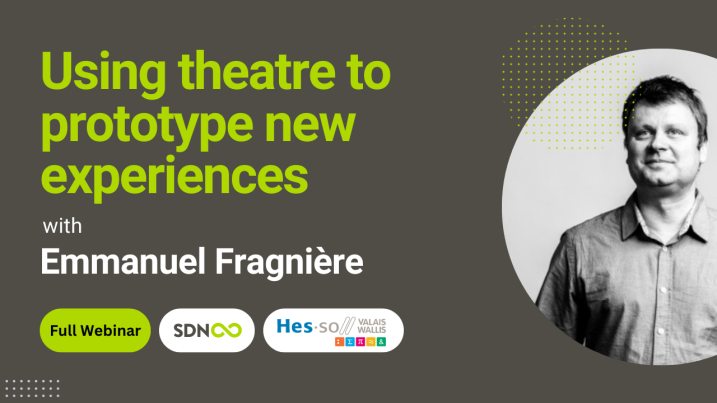
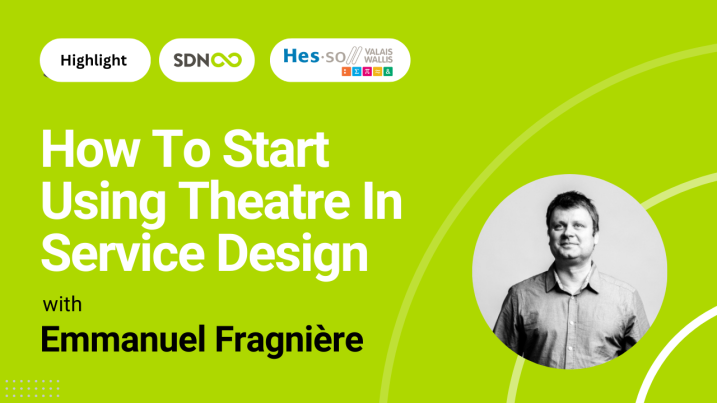
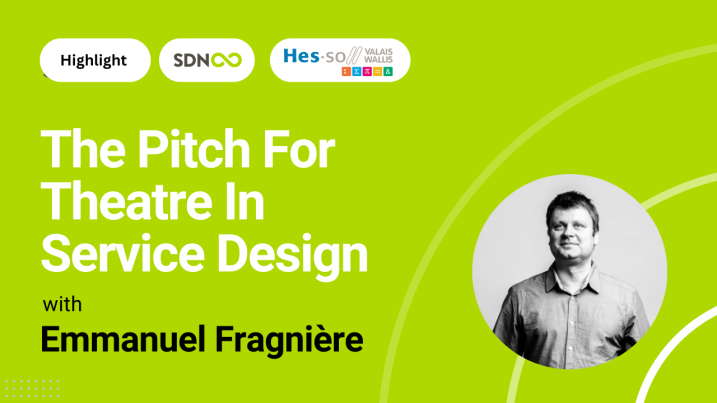
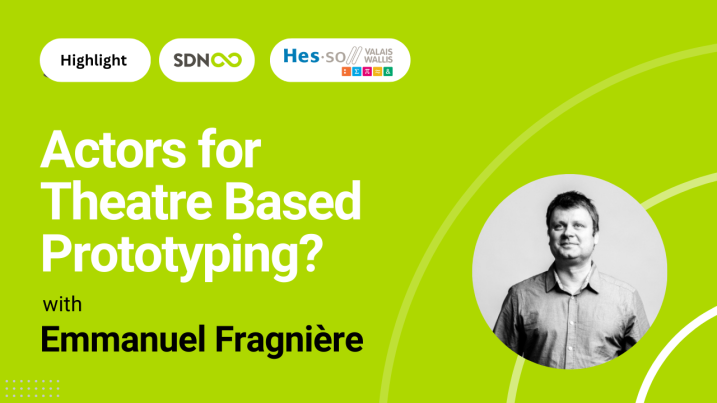
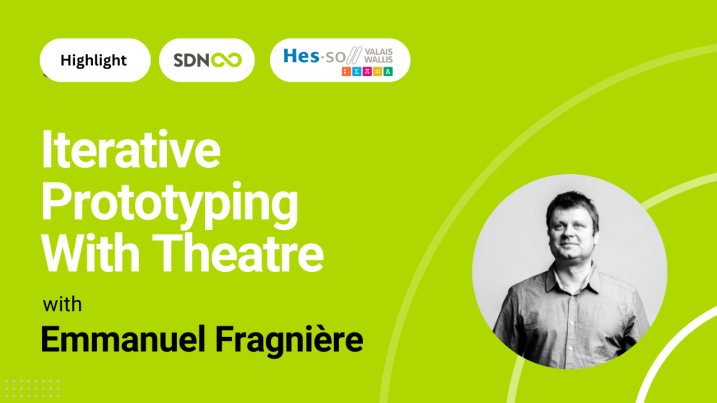

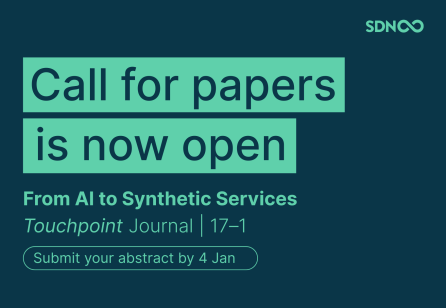



Share your thoughts
0 RepliesPlease login to comment